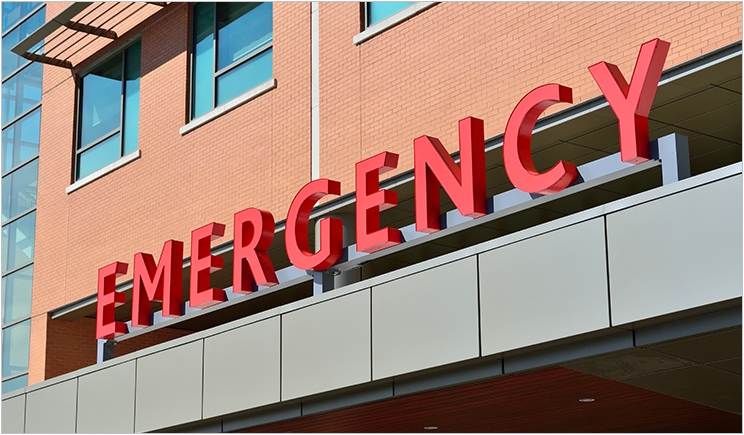
Access to oral healthcare remains a problem across the nation. Many patients today turn to their local hospital’s emergency department (ED) when they have problems as a last resort simply because they can’t afford a dentist—or because there’s no dentist practicing in their area. The ADA reports that most of these patients suffer from dental decay that could have been prevented with regular checkups.
This issue is particularly acute in Nebraska, which saw 9,943 dental-related ED visits from 2011 to 2013, according to the State Emergency Department Database. Also, 39% of these visits were by patients who were self-financed or uninsured. Plus, 20 of Nebraska’s 93 counties don’t have a dentist, and 9 of these counties had more than 50 visits per 10,000 population. The mean and total ED charges for these visits were $934 and $9.3 million, respectively.
Researchers at the University of Nebraska Medical Center and the University of Iowa recently examined these disparities with an eye on identifying risks and improving care. According to their research, patients who are uninsured, aged 25 to 44 years, covered by private insurance, and living in urban areas are at more risk. Sankereeth Rampa, MBA, MPH, of the University of Nebraska Medical Center, recently shared his insights about their work.
Q: Would you say that the number of ED visits for dental problems is increasing, decreasing, or staying level?
A: Based on the 2 studies we have conducted using state-level specific ED data, we found ED visits for dental problems increasing. In California, dental-related ED visits increased over the study period, from 44,516 in 2005 to 70,385 in 2011. In Nebraska, dental-related ED visits increased from 3,243 in 2011 to 3,495 in 2013.
Q: What were the most common oral health problems that drove patients to the ED?
A: The most common oral conditions leading to ED visits are dental caries and pulpal or periapical lesions.
Q: How did the ED doctors treat these problems? And how effective was this treatment?
A: Typically, dental conditions are treated in dental clinics. EDs are ill-equipped to treat dental conditions. Also, it is only occasionally you find actual specialized oral care treatments in hospital settings. Most of the time, they are just given prescription medicine. Hence, it is very unlikely a patient receives an effective treatment for dental problems in the ED.
Q: Could these problems have been prevented? If so, how?
A: Many dental problems can be easily avoided or minimized with timely preventive oral health treatment. If dental conditions are not treated in a timely manner, they could pose severe problems at a later stage and may necessitate visits to hospital-based EDs and even subsequent hospitalizations.
Q: What are the biggest obstacles to these patients getting that preventive treatment?
A: Lack of access to timely dental care due to uninsurance and out-of-pocket dental expenses, for example, is an important barrier to seeking preventive care. Many private health insurance plans do not include dental coverage except at an additional cost, and dental coverage of adults is not included as an essential benefit under the Affordable Care Act. Dental insurance plans are very costly and unaffordable for low and mid-level income families. People without any dental insurance are less likely to seek preventive dental care and may suffer poor oral health as a consequence.
Q: The study noted that 20 counties do not have a dentist. What is causing this shortage?
A: These counties include inner cities and rural areas. Dentally uninsured and low-income families live more in inner cities and rural areas. Dentists are unwilling to lend their services to those who are uninsured and those covered by Medicaid because of the low reimbursement that they receive in return. For this reason, most of the dentists prefer not to practice in inner cities and rural areas.
Q: What impact is this shortage having on the state’s oral health?
A: The shortage of dentists could further contribute to worsening oral health care and perpetuating the disparities in dental care access.
Q: What could be done to recruit more dentists to practice in underserved areas?
A: Increase scholarship and loan repayment programs for dentists. These programs could aid the dentists in paying their education expense in exchange for service in underserved areas for specified number of years.
Q: In the short term, what can today’s dentists do to improve access to dental healthcare?
A: I don’t think dentists can do any more than what they are doing now to improve access to care. Insurance (including Medicaid) reimbursements must be increased.
Q: In the long term, what could be done to improve this access?
A: To improve access to dental care, more emphasis should be on dental-related preventive programs for vulnerable groups. It is also very crucial that significant awareness be created among the general population on dental care and related outcomes. The reason many people ignore dental problems is a lack of knowledge about these issues. Also, there is a need to expand the current dental care workforce and increase the use of dental hygienists or dental therapists for routine preventive dental care.
Related Articles
Emergency Room Visits for Dental Problems Continue to Increase
Dental Cases Spike in Florida ERs: A Q&A with Dr. Scott L. Tomar











